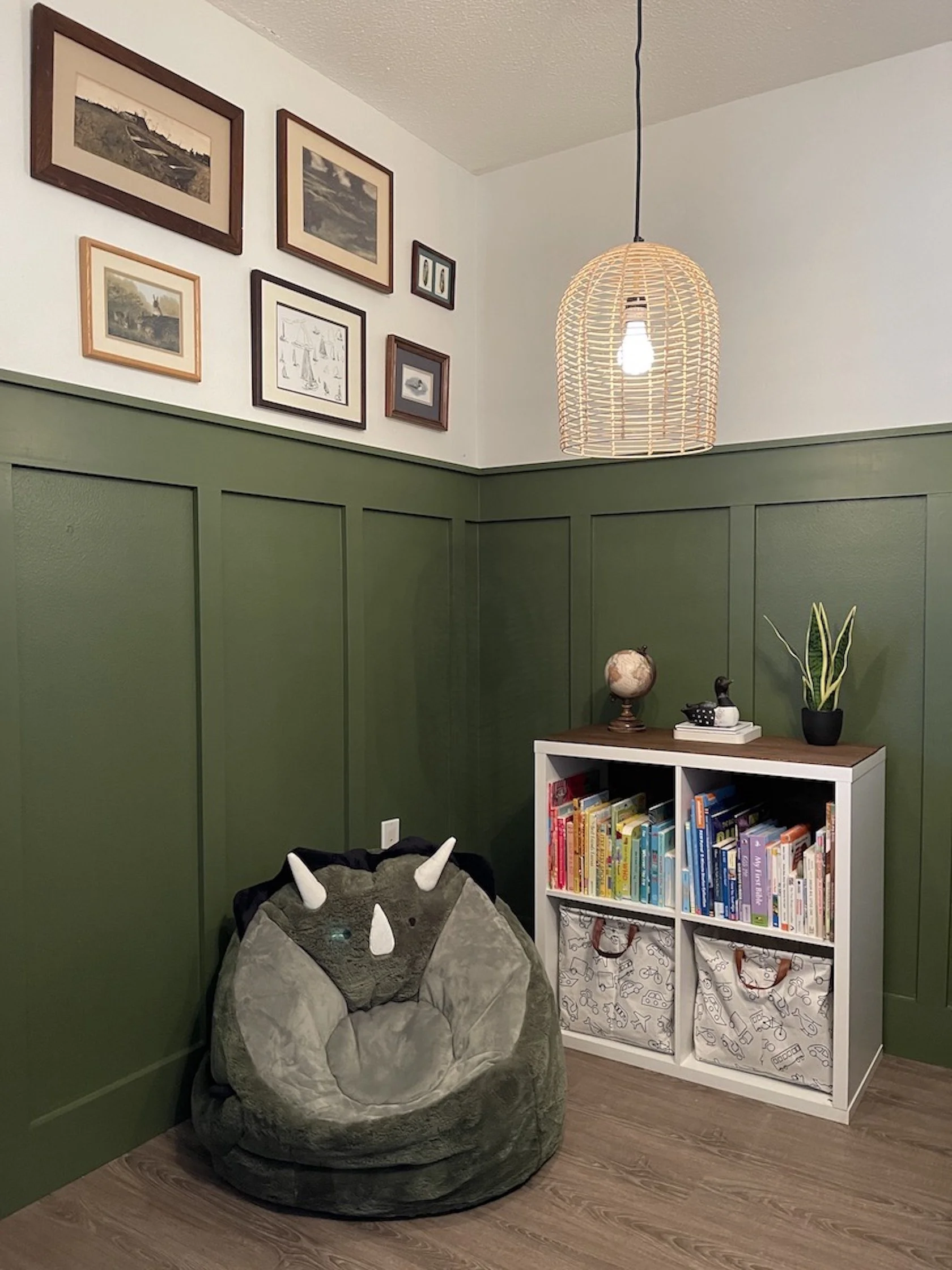Unleashing Your Creativity with Beginner Power Tools
Get started in DIY!
If you’re itching to transform your living spaces into a vibrant haven but you’re unsure of where to begin… you’re in the right place. Unlocking the potential of your home doesn't have to be a daunting task! With the power of some basic, beginner power tools, you can embark on a journey of creativity and home improvement.
In this blog, we will explore three essential power tools—the drill, impact driver, and orbital sander—and how mastering a few will introduce limitless possibilities for you and your home.
1. The Mighty Drill
Let's start with the drill, an indispensable tool that lays the foundation for any DIY project. A drill is a versatile device that uses rotational force to create holes or drive screws into various materials. With a range of drill bits, you can effortlessly work with wood, metal, or even masonry. Watch this video I created on How to Use a Drill and Impact.
You might use a drill to:
Hang shelves
Assemble furniture
Install curtain rods
Mounting artworks
Create DIY planters
Construct a homemade bookshelf
Mastering the drill is a foundational skill that you’ll carry in almost every project. Once you've grasped its core functionalities, you can move on to more complex tools and techniques.
The first thing you’ll want to do is familiarize yourself with your specific drill. Read through the manual, get comfortable with the drill’s grip and weight. Next, take a look at the drill bits. There are so many different bits and they’re used for specific materials or screws.
A few tips:
Practice drilling holes in a piece of scrap wood so you can get used to the drill’s force and applying steady pressure to the trigger
Let the drill do the work for you. No need for excessive force!
In certain projects, it’s crucial that you know when to stop drilling. In thinner materials, you won’t want to drill all the way through, so practice understanding the drill (and it’s bits) depth.
2. The Impact Driver
Next, we have the impact driver, a true workhorse for any DIY enthusiast. This tool is designed to provide high torque and rotational force, making it ideal for driving screws and bolts into tough materials.
You might use an impact driver to:
Build a deck
Construct a backyard shed
Assemble outdoor furniture
Install kitchen cabinets
Work on a car
The impact driver's superior power and efficiency make it an excellent companion for larger-scale projects. By mastering this tool, you'll gain the confidence to tackle more ambitious endeavors.
Think of your impact driver as the drill… leveled-up. It helps drive screws and bolts more quickly thanks to its much more powerful torque. Unlike a drill, an impact driver requires downward pressure to keep the bit engaged with the screw or bolt head. Apply firm, direct pressure without tilting the tool to maintain a straight and controlled drive.
Remember, each impact driver may have specific features and controls, so always refer to the manufacturer's instructions. With practice and experience, you'll become more proficient at using an impact driver for various fastening tasks.
A few tips:
Wear safety glasses and even ear protection to protect you from flying debris and high noise levels
Start slow and then ramp up.
Use clamps, vices, or any other suitable method to hold the material securely in place.
3. The Versatile Orbital Sander
Completing our power tool trifecta is the orbital sander. This handheld device is perfect for achieving smooth and even surfaces by rapidly oscillating a sanding pad. It's particularly useful for refinishing furniture or removing old paint and varnish.
You might use an orbital sander to:
Restore wooden furniture
Refinish a hardwood floor
Prepare surfaces for painting
Once you've mastered the orbital sander, you'll have the skills to transform tired, lackluster items into stunning pieces that reflect your personal style. Watch this video I created that teaches you how to use a sander.
The tool itself is pretty straight forward, but selecting the right sandpaper grit is half the battle. Different projects may require different sandpaper grits. Coarser grits (lower numbers like #40) are suitable for removing material, while finer grits (higher numbers like #300) are used for smoothing. A good rule of thumb is to start with a medium grit and adjust as needed based on the project requirements.
Practice the proper technique on scrap wood until you feel comfortable. Hold the orbital sander with a firm grip, using both hands for stability and control. Keep the sander flat against the surface and apply even pressure while moving it in smooth, overlapping passes. Avoid tilting the sander or applying excessive pressure. Periodically check the sanded surface to assess the progress and ensure you're achieving the desired level of smoothness. If necessary, switch to a finer grit sandpaper for a smoother finish.
A few tips:
The oscillating motion and grit of the sandpaper will do the majority of the work. Be careful applying too much pressure, as this can lead to uneven or even damaged surfaces.
Sanding can be messy! Prepare for the mess by sanding outside or with a vacuum hookup.
While these three tools are fantastic on their own, they also serve as gateways to a world of other exciting power tools. By mastering the drill, impact driver, and orbital sander, you'll develop fundamental skills such as measuring, cutting, fastening, and finishing. These skills will lay the groundwork for future exploration with tools like the jigsaw, circular saw, or even a router, broadening your horizons and expanding your creative potential.
If you’re interested in learning more in-depth training on these tools, as well as six other beginner tools I love, check out my YouTube video series on Power Tool Basics. Even if it feel scary or intimidating, these videos are designed to give you the confidence to safely and effectively start creating your dream home.









